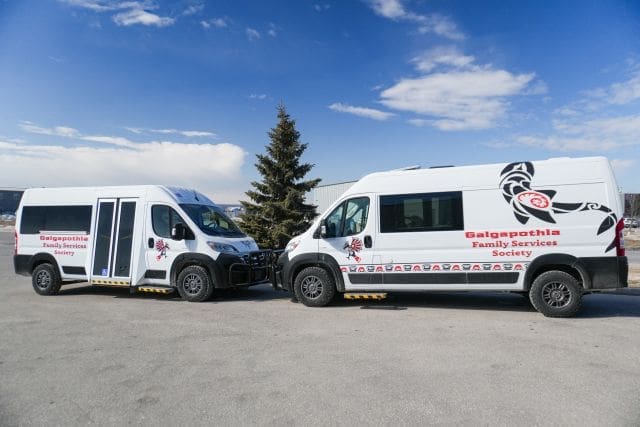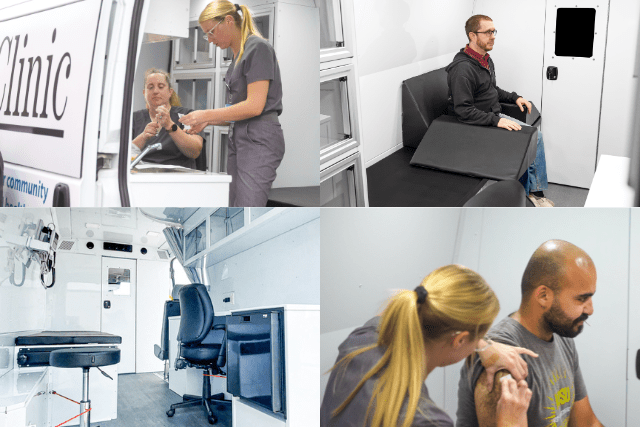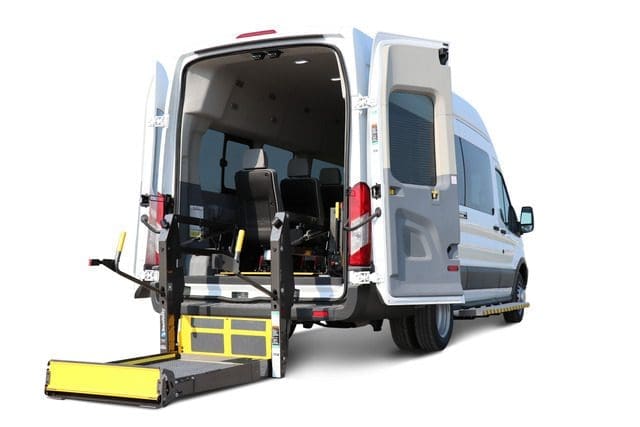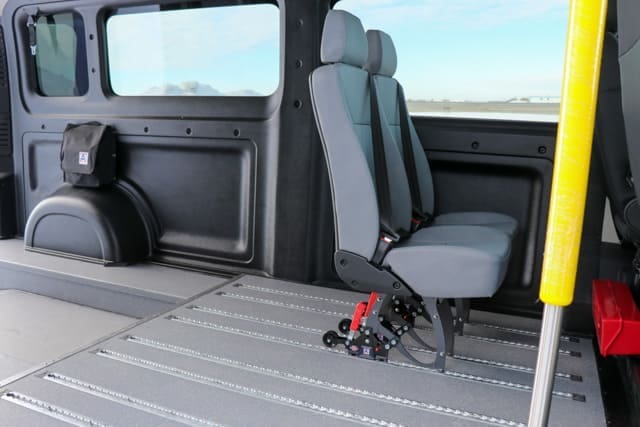Have you ever wondered how many people in Canada skip appointments because they can’t get there? Nearly one in five Canadians delay or avoid care due to barriers like distance, cost, or transportation gaps. If you’re an organization looking at wheelchair vans or mobile medical units, you probably feel the weight of that problem.
You want to close those gaps for your community, but hesitation creeps in. What if the investment doesn’t deliver? What happens if people keep falling through the cracks? The risk is real: Missed care, isolation, and growing health inequities. The desired state?: Safe, reliable, and dignified access to health and mobility. That’s the gap we’re talking about.
For over 20 years, MoveMobility has helped Canadian organizations like yours bring that desired state closer. We’ve built more than 150 mobile medical units, all carrying the National Safety Mark, along with Ford QVM and Stellantis QPro certifications. That means every vehicle meets the strictest safety and quality standards. From community health centres to Indigenous leadership groups, we’re trusted because we listen first and build second.
In this article, you’ll learn all about five Canadian organizations who are actively changing and saving lives with MoveMobility vehicles.
How are organizations changing lives with MoveMobility vehicles?
Across Canada, MoveMobility vehicles are helping organizations like yours break down barriers to health and connection. These vehicles give organizations the chance to meet people where they are and offer care in a way that feels personal and welcoming. Let’s start by talking about how one council in northern Ontario is using theirs.
1. Keewaytinook Okimakanak Northern Chiefs Council Mobile Counselling Van
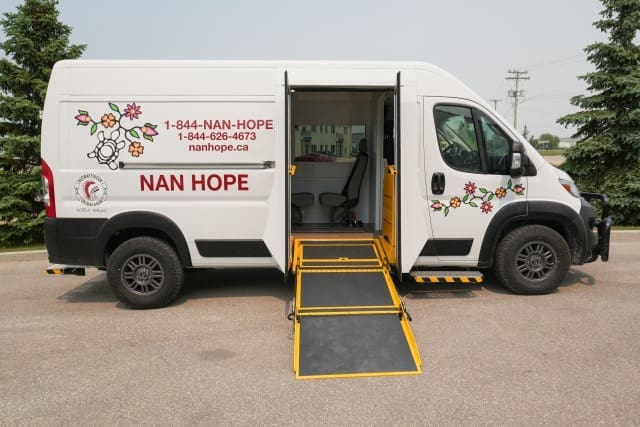
The Keewaytinook Okimakanak Northern Chiefs Council supports six First Nation communities. Their work includes advocacy, guidance, and programs that strengthen local families. They also promote Indigenous culture and help communities build toward self-sufficiency. It’s a leadership role that carries a lot of responsibility, and part of that work means finding ways to support people’s health and well-being.
That’s where their Mobile Counselling Van comes in. Instead of asking people to travel long distances to access care, the van brings counselling and wellness services directly into each community. The inside feels warm and safe, more like a living room than a clinic. There are couches, a work table, and flooring that looks like wood, so people feel at ease right away.
Some of the features that make a difference:
- Plenty of light: Natural light fills the space, with options for skylights and ventilation to support smudging.
- Privacy: Tinted windows keep sessions discreet, and a security option adds peace of mind.
- Practical tools: Wi-Fi for staff, storage cabinets for supplies, and a trail kit upgrade for tough rural roads.
This van gives the council more than a way to travel. It creates a safe space where people can heal, share, and connect with dignity.
2. Opaskwayak Cree Nation Mobile Clinic Van
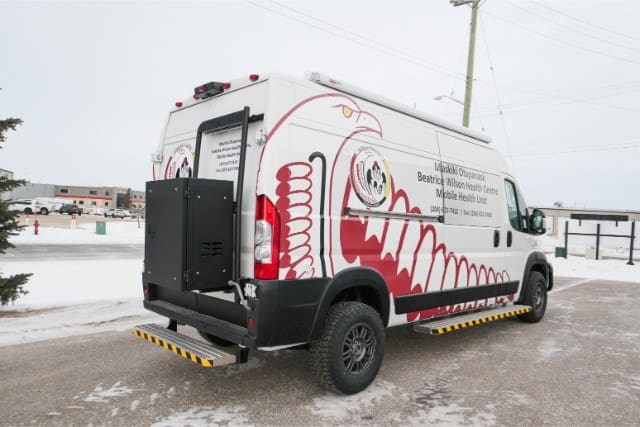
The Opaskwayak Cree Nation in Manitoba has a long history of working to improve health and quality of life for its people. Like many Indigenous communities in Canada, distance from hospitals or clinics often makes it hard to access basic care. For some families, the closest health center is hours away. That gap creates real risks when people can’t get help for everyday needs.
To address that gap, the Opaskwayak Cree Nation has started using a Mobile Clinic Van. Think of it as a doctor’s office on wheels. It allows health teams to visit patients right where they live or in nearby community spaces. This makes care more approachable and culturally respectful.
Inside, the van is designed to feel like a safe, private clinic room. There’s a patient bed with under-bed storage, floor-to-ceiling cabinetry, and the option for a sink and fridge. Heat and air conditioning keep the space comfortable year-round, while a reliable power supply supports medical equipment.
How can the Mobile Clinic Van be used?
- Addictions programs: Care delivered in a safe and stigma-free space.
- Housing and homeless services: Social workers use it to meet clients where they are.
- Non-emergency care: Bloodwork, exams, first aid, and even stretcher transport.
Opaskwayak Cree Nation’s Mobile Clinic Van removes the barrier of distance. It gives people the chance to receive care without leaving their community, and that means healthier, stronger families.
3. Galgapothla Family Services Society Mobile Counselling Van
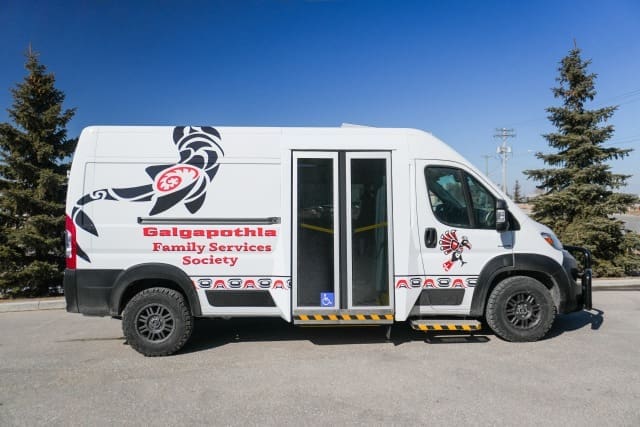
The Galgapothla Family Services Society in northern British Columbia is focused on protecting children and strengthening families. Their team offers counselling, family support, and cultural programs that respect local traditions. They step in to help when families are going through tough times and need extra guidance.
A big challenge for Galgapothla is distance. Families often live far from town, and travelling to an office for support is not always possible. Stress, lack of transportation, or even weather can get in the way. That’s why their Mobile Counselling Van is so important.
The van lets staff bring help directly into the community. Families don’t have to worry about making a long trip. Instead, they can talk with counsellors in a private, respectful space close to home. It feels more approachable than a formal office, which makes it easier for people to open up.
What the van helps with:
- Counselling: One-on-one or family sessions for guidance and support.
- Crisis response: Staff can quickly meet families when urgent help is needed.
- Building trust: Meeting people where they are creates stronger connections.
The Mobile Counselling Van also allows Galgapothla to respond quickly when families face sudden challenges. Showing up right in the community helps people feel seen, cared for, and supported.
With this van, Galgapothla is able to reach families who might not ask for help otherwise. It creates a safe space for healing and gives families the chance to feel hopeful again.
4. Vancouver Island Health Mobile Clinic Van
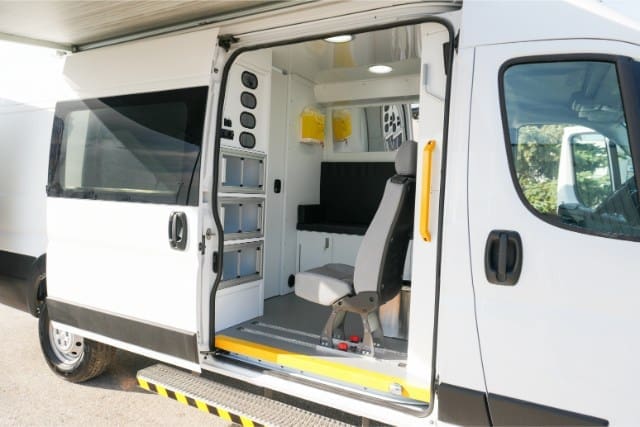
Vancouver Island Health serves people spread across one of the most rugged and beautiful parts of Canada. From downtown Victoria to small coastal towns and remote island communities, the distance to care can feel like an ocean away. Roads, ferries, and long travel times often make something as simple as a blood test or a checkup a full-day effort.
The Mobile Clinic Van helps close that gap. Instead of asking patients to make the trip, health teams can drive or ferry the van directly into smaller communities. For families who live hours away from a hospital, that visit can mean the difference between early treatment and an emergency.
Inside the van, patients find a private and professional space that feels safe and approachable. Nurses and social workers use it for exams, basic lab work, and health education sessions. It also gives staff a way to connect with people about preventive care, which is especially important in areas where resources are limited.
How this van is making an impact on Vancouver Island:
- Remote outreach: Visits coastal and island communities that lack clinics.
- Time saved: Cuts down long trips for simple but important services.
- Safe space: Offers privacy for health conversations and support.
- Adaptable use: Fits everything from bloodwork to community health workshops.
For Vancouver Island Health, the Mobile Clinic Van represents more than access. It shows a commitment to meeting people where they live, no matter how far the road or ferry ride may be.
5. Kahnawà:ke Shakotiia’takéhnhas Community Services Mobile Outreach Van
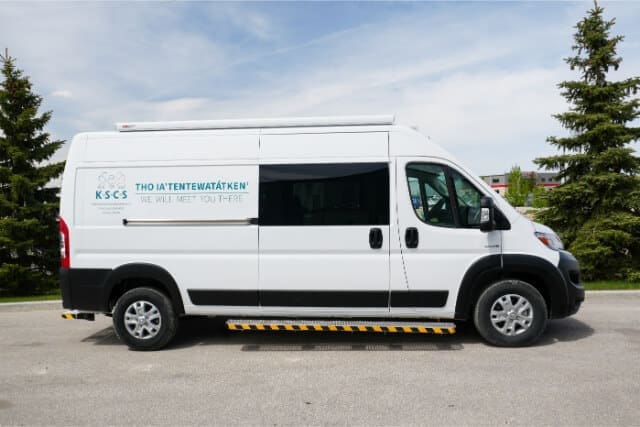
In Quebec, the Kahnawà:ke Shakotiia’takéhnhas Community Services (KSCS) supports the Mohawk community of Kahnawà:ke with programs that focus on health, wellness, and social services. To reach more people in their community, KSCS added a Mobile Outreach Van. This type of vehicle gives organizations a way to extend programs beyond office walls and into neighborhoods where people live, work, and gather.
Mobile Outreach Vans can be recommended for programs such as:
- Housing support
- Mobile health visits
- Harm reduction services
- Referral services
- Overdose prevention
- Mental health and addictions counselling
The van is designed with layouts that can be set up for different purposes. Some layouts make it easy to transport staff or clients. Others focus on providing space for personal services on site. All surfaces inside are wipe-clean and built for safe use in a medical or social service environment.
The MO Model includes:
- Aluminum storage cabinetry
- Slide-to-open cabinets
- Passenger seats
- Office space
- Rear heat and air conditioning
Mobile office space features:
- Secured rolling chair
- Desk space
- Storage for records or equipment
- Overhead lighting and cabinets
- Reliable power supply
Optional equipment to customize your van:
- Sink
- Fridge
- Extra power supply
- Cab divider
- Other custom options
For KSCS, this Mobile Outreach Van offers flexibility. It creates opportunities to bring services closer to the community, while giving staff a safe, professional space to work wherever they need to be.
Got any questions about MoveMobility vehicles?
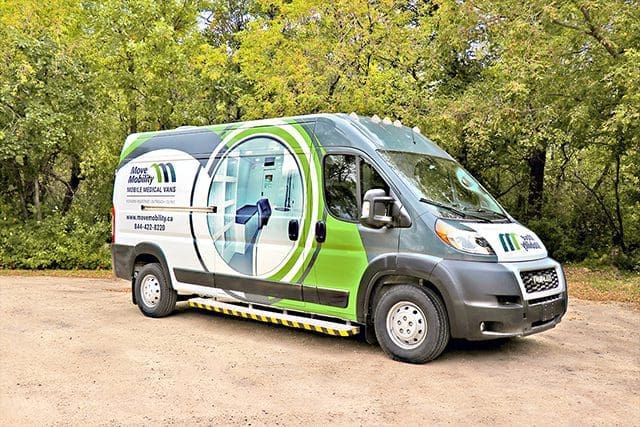
You came to this article because you’re exploring how organizations like yours are overcoming barriers to care and mobility. You may be weighing the risk of investing in a vehicle and wondering if it will truly make a difference for the people you serve.
Here’s what you learned today:
- Communities across Canada face gaps in access to care and connection.
- Five organizations are already utilizing MoveMobility vehicles to deliver support directly to their communities.
- A vehicle can create dignity, inclusion, and lasting impact in your own community.
Over the course of more than two decades, MoveMobility has manufactured hundreds of vehicles. But what matters most is how those vehicles have helped organizations like yours deliver care in ways that are culturally respectful, safe, and practical. Our team works with you to design something that fits your community’s unique needs.
That’s why leaders from coast to coast trust us to walk alongside them as they bring change to the people they care about most. If you’re ready to talk about how a vehicle can support your mission, click the button below to connect with a mobility expert today.
If you’re not ready to talk just yet, we get it. Here are a few resources that can help you take the next step:
- How much does a mobile medical van cost?: Gives you a clear picture of what to expect financially so you can start planning with confidence.
- How do you choose the right mobile medical unit manufacturer? This guide gives helpful advice on deciding on the right manufacturer to work with.
- How much does a wheelchair van cost? You’ll learn what you can expect to pay for a wheelchair van.


